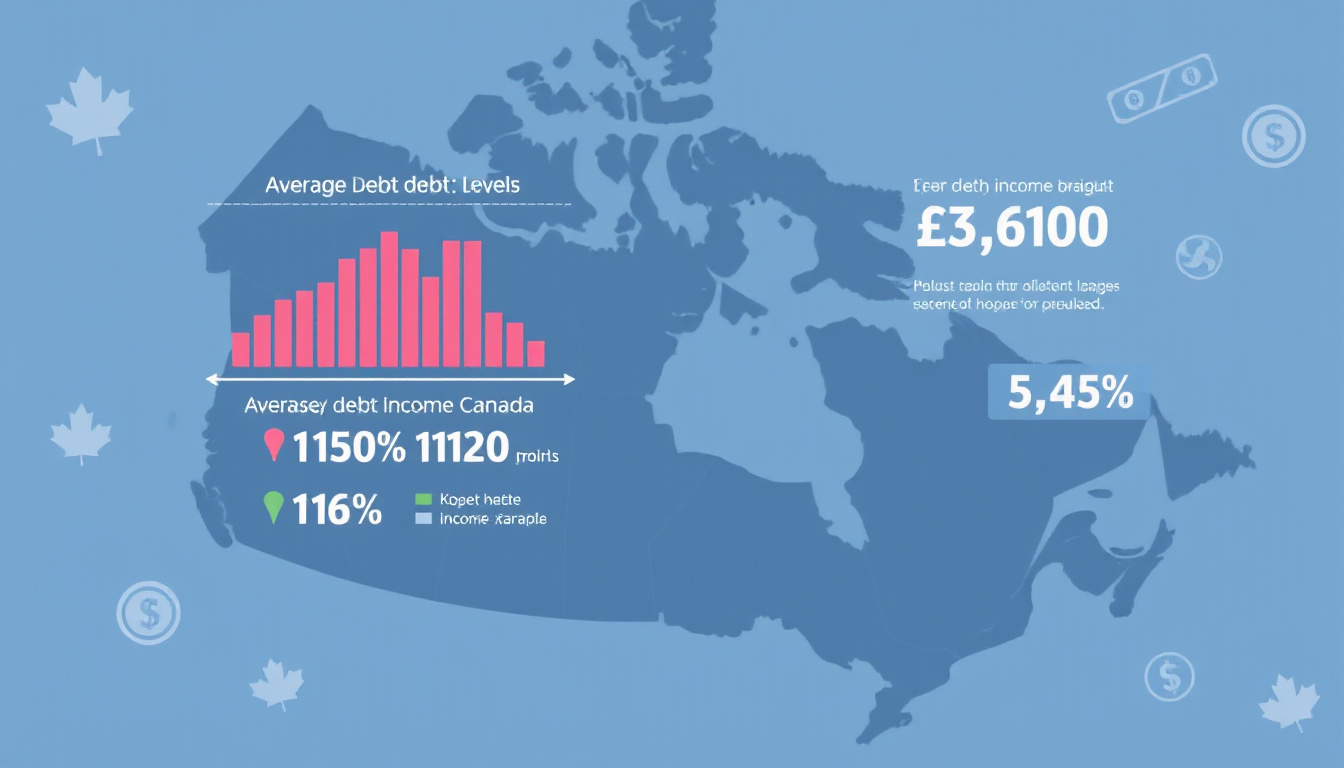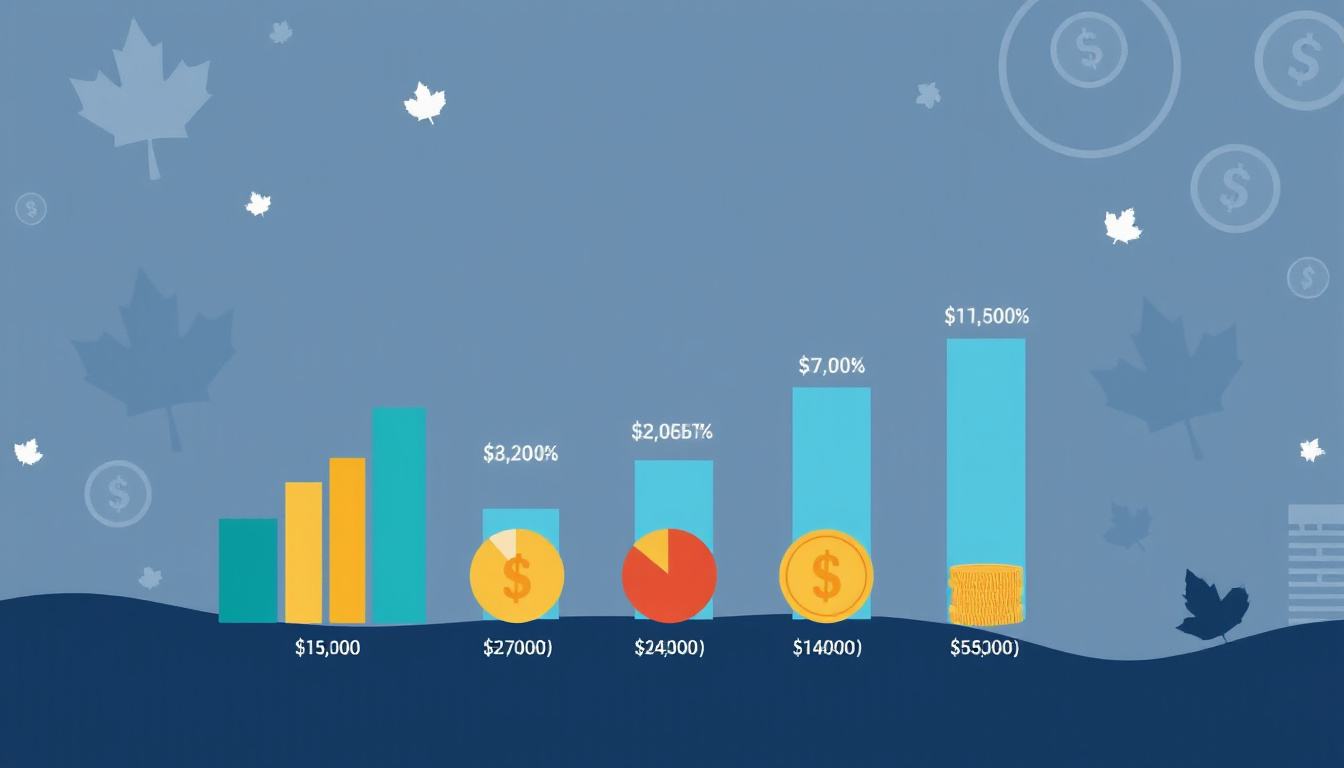In Canada, the average debt by income level significantly affects the financial health of households, illustrating a critical relationship between earnings and obligations. As of 2023, Canadian households carry approximately $
1.83 trillion in debt, with the average debt per household reaching around $73,800. This statistic underscores the pressing issue of debt across various income brackets, where individuals with lower income levels tend to face higher debt-to-income ratios, emphasizing the disparities in financial burden. In this comprehensive guide, we will explore how income levels impact average debt, analyze debt across different income categories, and provide strategies for managing debt effectively in relation to one’s income. Sources such as Statistics Canada and the Bank of Canada offer valuable insights into these trends, making this information essential for anyone looking to understand the debt landscape in Canada.

Key Takeaways
- Average debt levels in Canada vary significantly across different income levels.
- Higher income earners tend to have more debt, but also greater capacity for repayment.
- Lower income brackets face a higher debt-to-income ratio, impacting their financial stability.
- Understanding the dynamics of income and debt can help inform better financial decisions.
- Effective debt management strategies are essential for individuals across all income levels.
Overview of Average Debt in Canada
In 2023, the average debt by income level in Canada reveals a significant disparity among different income groups. According to a report from Statistics Canada, households earning below $50,000 carry an average debt of approximately $41,000, while those in the income bracket of $100,000 or more have an average debt of around $163,000. This demonstrates a clear trend where higher income individuals tend to accumulate more debt, often due to larger mortgages and consumer loans. Understanding the average debt by income level is crucial, as it helps in comprehending the broader financial dynamics faced by Canadian families and can lead to better-targeted debt relief solutions.
Income Levels and Their Impact on Debt
The average debt by income level in Canada reveals significant disparities among different income brackets. As of 2023, Canadians in the lowest income bracket (earning less than $30,000 annually) carry an average debt of approximately $30,000, while those in the highest income tier (earning over $100,000) average around $80,000 in debt. This striking contrast highlights how income levels can greatly influence the amount of debt individuals accumulate. According to the latest report from Statistics Canada, household debt has seen a consistent rise, largely attributed to factors such as increased borrowing for housing and consumer goods. As Canadian households navigate economic challenges, the role of income in debt levels remains a crucial factor for policymakers and financial advisors.
‘Debt is a trap; it is what we use to make ourselves feel better, and the irony is, it makes us feel worse.’ – Unknown

Comparative Analysis of Debt Across Different Income Brackets
In Canada, the average debt levels vary significantly across different income brackets, illustrating the impact of financial status on borrowing and debt management. According to recent data from Statistics Canada, households in the lowest-income bracket (earning less than $30,000 annually) carry an average debt of approximately $20,000. Conversely, those in the highest-income bracket (earning over $100,000) have an average debt level of around $120,000. This stark contrast highlights that as income increases, the amount of debt also tends to rise, albeit with higher earning households often possessing greater assets. Understanding the nuances of average debt by income level can inform financial strategies and policies aimed at managing debt across various demographics.
Strategies for Managing Debt by Income Level
According to the latest data from Statistics Canada, the average debt by income level in Canada varies significantly, with low-income households reporting an average debt of approximately $20,000, while high-income households carry an average debt of around $150,000. This stark contrast illustrates the impact of income on debt accumulation and financial stability. With median household income in Canada reported at $84,000 as of 2021, it’s essential to understand how debt levels can strain finances across different income brackets. For example, individuals in the lowest 20% of income earners may find their debt levels correspond to nearly 50% of their annual earnings, indicating a precarious financial position. On the other hand, higher-income earners, though carrying more debt, often have greater access to resources and financial literacy, allowing them to manage their debt more effectively. This disparity highlights the need for tailored debt management strategies based on income levels to promote financial health and stability for all Canadians.
